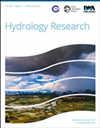Prediction of hourly inflow for reservoirs at mountain catchments using residual error data and multiple-ahead correction technique
IF 2.4
4区 环境科学与生态学
Q2 Environmental Science
引用次数: 0
Abstract
This study coupled the ensemble learning method with residual error (RE) correction to propose a more accurate hydrologic model for the time-series prediction of the reservoir inflow. To enhance the prediction capability of the model in mountain catchment, three deep learning (DL) models, namely the encoder–decoder gated recurrent units (ED-GRU), encoder–decoder long short-term memory network (ED-LSTM), and combined convolutional neural network with LSTM (CNN-LSTM), were deployed to train reservoir inflow prediction model for the lead times of 1–24 h. The prediction outputs from three DL models were then incorporated into the categorical gradient boosting regression (CGBR) model to resolve the highly non-linear relationship between model inputs and outputs. In the final procedure, the RE correction method was implemented by using the outcomes of the CGBR model to construct the proposed hybrid model. The proposed model was applied to simulate the hourly inflow in the Shihmen and Feitsui Reservoirs. The proposed model achieved improved performance by an average proportion of 66.2% compared to the three DL models. It is demonstrated that the proposed model is accurate in predicting the reservoir peak and total inflows and also performs well for storm events with multi-peak hydrographs.利用残差数据和多次正校正技术预测山区集水区水库每小时来水
本研究将集成学习方法与残差(RE)校正相结合,提出了一个更精确的水文模型,用于水库入流的时间序列预测。为了提高模型在山地流域的预测能力,采用编码器-解码器门控循环单元(ED-GRU)、编码器-解码器长短期记忆网络(ED-LSTM)和LSTM组合卷积神经网络(CNN-LSTM)三种深度学习模型,将3个深度学习模型的预测结果整合到分类梯度增强回归(CGBR)模型中,以解决模型输入和输出之间的高度非线性关系。最后,利用CGBR模型的结果构建混合模型,实现RE校正方法。应用该模型对石门水库和飞穗水库逐时入库进行了数值模拟。与三种深度学习模型相比,该模型的平均性能提高了66.2%。结果表明,该模型对水库峰值和总流入量的预测具有较好的准确性,对具有多峰水文的暴雨事件也有较好的预测效果。
本文章由计算机程序翻译,如有差异,请以英文原文为准。
求助全文
约1分钟内获得全文
求助全文
来源期刊

Hydrology Research
Environmental Science-Water Science and Technology
CiteScore
5.30
自引率
7.40%
发文量
70
审稿时长
17 weeks
期刊介绍:
Hydrology Research provides international coverage on all aspects of hydrology in its widest sense, and welcomes the submission of papers from across the subject. While emphasis is placed on studies of the hydrological cycle, the Journal also covers the physics and chemistry of water. Hydrology Research is intended to be a link between basic hydrological research and the practical application of scientific results within the broad field of water management.
 求助内容:
求助内容: 应助结果提醒方式:
应助结果提醒方式:


